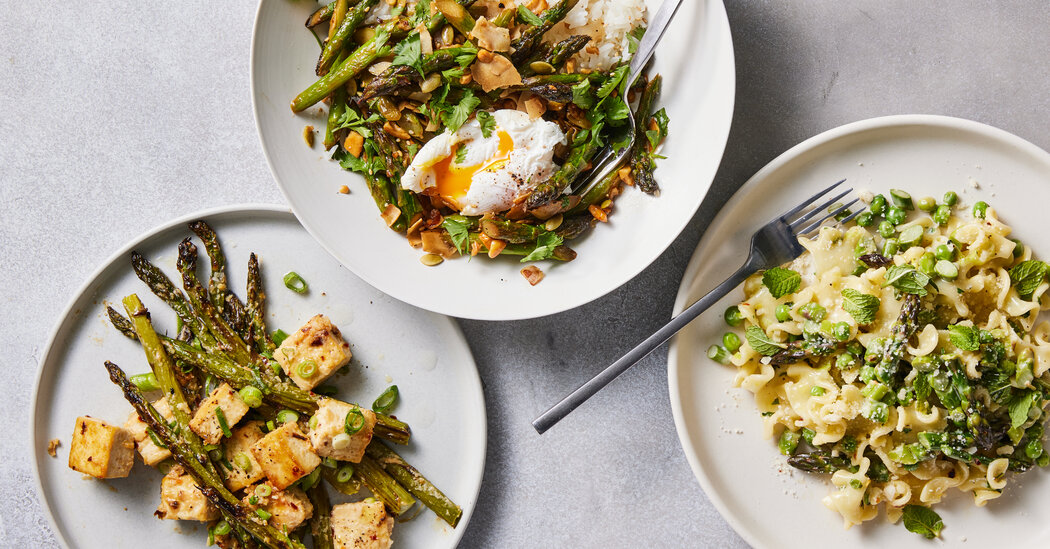The first blush of asparagus season never gets old. Every April, seeing those violet-tipped bunches at the farmers’ market sends my pulse zipping and my mind whirling. Dreaming up new ways of preparing them is almost as thrilling as eating them, though clearly not as satiating.
Because asparagus cook so quickly and are delightful at any stage of doneness — crisp-tender, velvety soft and even raw, if very fresh — they take well to a host of techniques.
Lately, roasting has been my go-to. It’s not necessarily easier or faster than any other method, but I love how the oven’s heat intensifies asparagus’ flavors, caramelizing and sweetening the stalks while the tips get crispy. It’s also convenient. Asparagus roasts beautifully at any temperature from 375 degrees to 450 degrees, which means I can throw a pan of oiled, salted spears into the oven along with whatever else I’m making for dinner. Add a drizzle of yogurt or good olive oil, and some chopped herbs or scallions, and you get a nearly effortless side dish with charm and sophistication.
This spring, though, I wanted to focus on some other cooking techniques that would both highlight asparagus’s versatility and coax a wide range of qualities from the leaf-green stalks.
Broiling
I started with broiling, which is roasting-adjacent. But where roasting surrounds the stalks with relatively even and gentle heat, broiling blasts them fiercely and directly, singing them until blackened outside, tender and sweet within.
Broiled asparagus has an intense flavor, so I wanted to match it with a pungent sauce. While the spears were under the broiler, I whisked together a simple miso glaze, flavored with sake, mirin and sesame oil, and brushed it on during the last few minutes of cooking. To make dish more substantial (and for a soft, mild contrast), I added tofu.
Pan-Searing
For the next recipes, I pulled out my knife and skillet with the idea of cutting the spears into bite-size pieces, then searing them until they would just yield to the tines of a fork.
From there, I took things in two completely different directions.
Looking to maximize crunch, I toasted cashews, sunflower seeds and unsweetened coconut flakes before adding the asparagus. Then I spiked everything with lime juice and chile flakes for acidity and heat. What resulted was a hearty side dish for simple roasted fish or chicken, or a light meal when served over rice or with a fried or soft-cooked egg, the yolk serving as glossy sauce.
Sautéing
For the next recipe, I sautéed the asparagus in butter to mellow its herbal grassiness and bring out its sweetness. Mixed with peas, mint, Parmesan and cream, it was the foundation of a rich pasta dish with primavera vibes, but easier, faster and brighter.
No matter how you end up cooking your asparagus, spring is when you can find it locally and very fresh (as opposed to imported bunches, which can be weeks old by the time they arrive at the supermarket). Look for stalks with tips that are tightly closed around the stems, like flower buds just emerging from their sepal (a great Wordle opening guess by the way). The stems should be smooth and green, without any browning or shriveling.
Then, just snap or trim off the tough ends, give them a rinse, and they’re ready to go, wherever you choose to take them.







